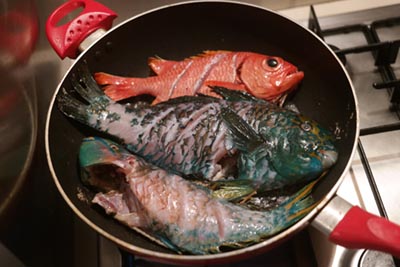Understanding dynamic social-environmental feedbacks in temporary fisheries closure
I am currently involved in a $1.6 million project intiative awarded by National Science Foundation’s Dynamics of Integrated Socio-Environmental Systems (DISES) program. I along Anastasia Quintana (UCSB), Steve Gaines (UCSB), Hunter Lenihan (UCSB), and Erendira Aceves Bueno (Univ. of Washington) will study one of the most vexing questions for the continued health of our oceans: How do we best manage coastal fisheries in manner that is both ecological beneficial and socially acceptable for the people who depend on them for their food and livelihood? Around the world over a billion people in coastal communities, especially in the developing world, depend on small-scale fisheries for seafood and income yet many are threatened by climate-change and overfishing.

To better manage these fisheries, scientists have long advocated for permanently closing some marine areas to fishing as means to sustain the fisheries. Yet despite the well documented ecological benefits of these permanent marine protected areas or “MPAs” there is growing recognition that more often than not local people do not embrace them, and they fail. Instead, many fishing communities prefer to close areas to fishing for a limited amount of time and then reopen them, a strategy that was employed for millennia throughout the Pacific Islands as a traditional fisheries management practice and that is gaining steam through grass-roots movement around the world. It remains an open question, however, how well temporary closures work, what social ecological effects they many have, and more broadly who deems them a failure or success?
To address these questions, our reserach group will be working with local stakeholders to study temporary closures in French Polynesia and Mexico. In both places temporary closers have grown in popularity and the research team intends to assess how different stakeholders such as fishers, scientists, non-governmental organizations, or government agencies interpret outcomes and decide that the reserves are successes or failures. Our team’s overall goal is to develop a decision-support tool to assist fishing community organizations to design and redesign closures. Their approach has the potential to provide a more descriptively accurate and illuminating account of how temporary marine reserves emerge and evolve and how success is produced in action.
